US semi-automatic infantry rifle cal .30 M1 Garand of World War II.
History, development, service, specifications, pictures and 3D model.
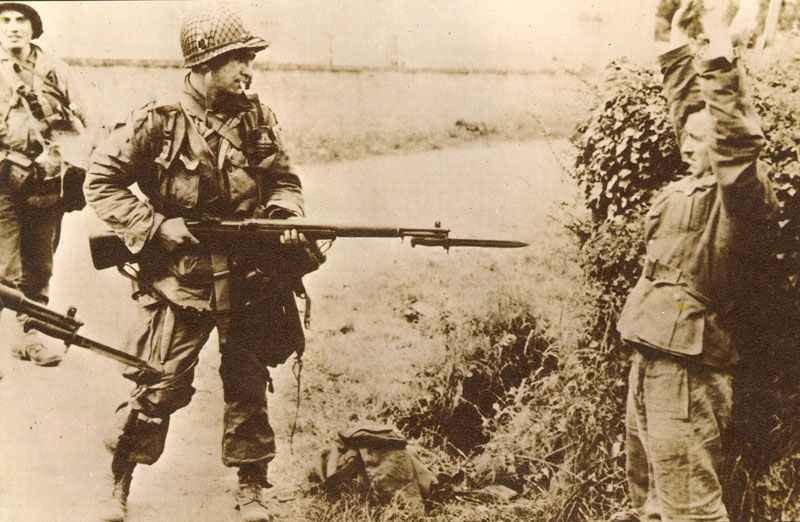
M1 Garand, US rifle cal .30
Table of Contents
M1 Garand, US rifle cal .30
Type: Automatic infantry rifle.
The M1 Garand is a semi-automatic rifle that was the standard U.S. service rifle during World War II and the Korean War. It was designed by Canadian-American firearms designer John Garand and was the first standard-issue semi-automatic rifle for the United States Armed Forces.
Overview M1 Garand
Caliber: .30-06 Springfield (7.62×63mm)
Action: Gas-operated, rotating bolt
Capacity: 8-round en bloc clip
Muzzle velocity: 2,800 ft/s (853 m/s)
Effective firing range: 500 yd (457 m)
Maximum firing range: 3,200 yd (2,900 m)
Weight (unloaded): 9.5 lb (4.31 kg)
Length: 43.6 in (1,107 mm)
Barrel length: 24 in (609.6 mm)
Sights: Aperture rear sight, barleycorn-type front sight
The M1 Garand is known for its reliability, accuracy, and powerful cartridge. Its distinctive “ping” sound, caused by the ejection of the empty en bloc clip after the last round has been fired, is an iconic feature of the rifle. The M1 Garand was replaced by the M14 rifle in U.S. service in the late 1950s, but it remains a highly sought-after firearm among collectors and enthusiasts.
History
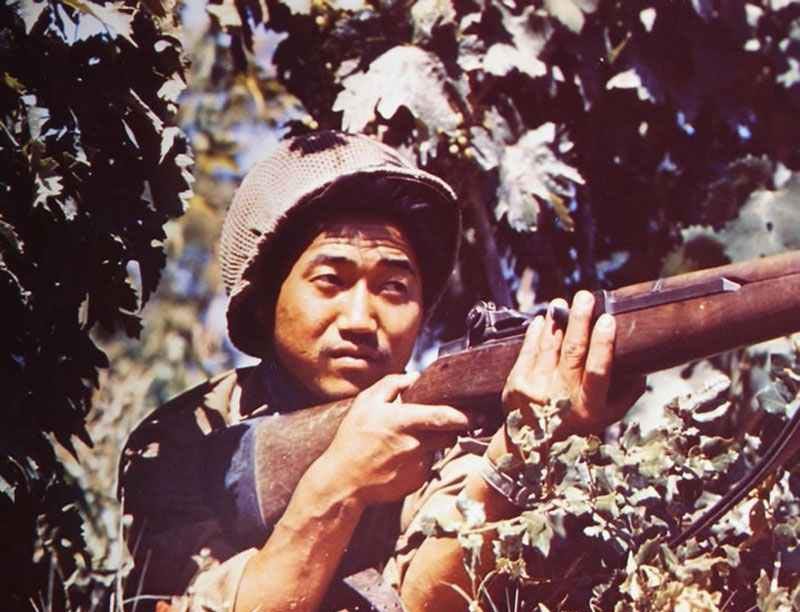
John C. Garand first produced a repeating rifle for trial in 1920, but it used an unusual system of operation, relying on the expansion and set-back of the primer cap in the cartridge to unlock the bolt action. While the system worked, it was not entirely practical, but Mr. Garand later joined the design staff of Springfield Arsenal and went on to develop the rifle which will always be associated with his name.
In 1929 a series of tests of competing designs of rifle were held at Aberdeen Proving Ground, as a result of which a Garand design of gas-operated rifle was selected as the most promising. Further development took place, and in 1936 it was standardized as the US Rifle M1.
The operation is by gas tapped very close to the muzzle end of the barrel, driving a long-stroke piston backwards. This, by means of a cam, rotates and opens the bolt and cocks the firing hammer. The return spring is carried in the gas piston, an arrangement which keeps the action body short and compact.
Feed is from a magazine loaded by an eight-round clip, and upon the last round being fired the clip is ejected and the action held open for re-loading. This is probably the least desirable feature of the M1 Garand, since single rounds cannot be loaded to ‘top up’ the magazine; it has to be a full clip or nothing. It also led to a tactical disadvantage in that the ejected clip made a most distinctive noise if it fell on hard ground, thus alerting the enemy to the fact that the rifleman was now holding an empty rifle. But in spite of this small defect, the M1 Garand proved reliable and accurate in service all over the world. Indeed, the postwar rifle, the M14, is largely based on Garand’s design.
Pictures of M1 Garand rifle
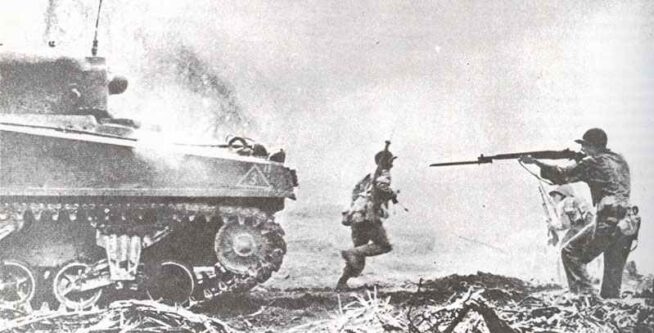
Specifications M1 Garand, US rifle cal .30
Specifications:
M1 Garand, US rifle cal .30 | Specification |
|---|---|
Type | automatic infantry rifle |
Caliber | .30in |
Length | 43.0in |
Weight | 9lb 8oz |
Barrel | 24.0 in long, 4 grooves, right hand twist |
Feed system | 8-round integral magazine, clip-loaded |
System of operation | Gas piston, turning bolt |
Muzzle velocity | 2800 feet/sec |
Service statistics:
M1 Garand, US rifle cal .30 | figures |
|---|---|
Manufactures | Springfield Arsenal, Winchester Repeating Arms Co., New Haven, Conn., USA |
Production delivery | 1936 |
Final delivery | after 1946 |
Production figure | 5,500,000 (of these 4,000,000 between 1942-45 and 600,000 more after the war) |
Animated 3D model of M1 Garand
References and literature
The Encyclopedia of Weapons of World War II (Chris Bishop)
The Encyclopedia of Infantry Weapons of World War II (Ian V.Hogg)
Infanterie im 2. Weltkrieg (J.B.King, John Batchelor)
Illustriertes Lexikon der Waffen im 1. und 2. Weltkrieg (V. Dolinek, V. Francev, J. Sach)




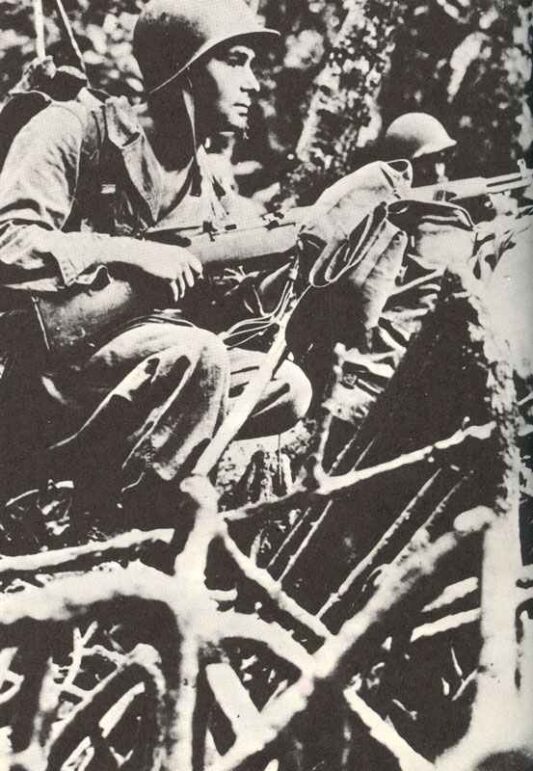

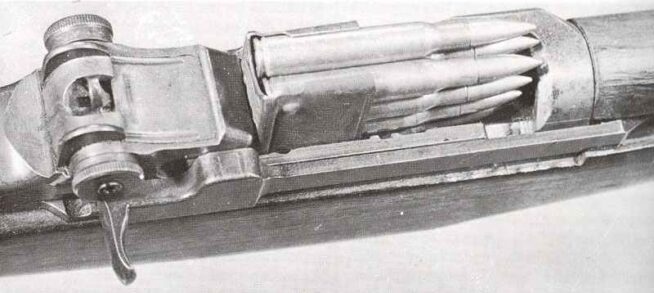




I watched a doco with an interview with a WW2 army vet who fought from Dday till surrender. He clearly stated that he despised with a passion the often repeated comment that the ejection of an M1 Garand empty clip and if falling on the ground or not was noticeable in battle or even at the range. He said that the enemy wasn’t that close and if they were then you weren’t shooting them. He said that the incredible noise of battle made everyone mostly deaf with your rifle noise and that of your squad around you. Also when your clip ejected there would still be others firing and if they weren’t then distance to the enemy and partial deafness would make completely cover any clip sounds. He firmly believed that the comment was started by stateside desk clerks who wanted to impress women with “real battle knowledge.” He was appalled that this has gone on so long and is now believed as fact when it’s obvious to anyone that’s fired a large rifle with no hearing protection especially in squad or anyone with commonsense that the sound would be impossible to hear especially in a battle.
The soldier was quite put out by the comment and that people even believed it.
So yeah, FULL sized rifle rounds no hearing protection and massed firing with the enemy at least a little bit away. You be the judge.
I would only point out that while the sound of an ejected clip is quite distinctive, it is unlikely to be noticed in the noise of battle. Also, it would be rare to be that close to an enemy. And there would usually other soldiers with still loaded weapons about. The only time I can imagine this being a real issue is in house to house, room to room fighting! The inability to top off the magazine was a more serious matter.